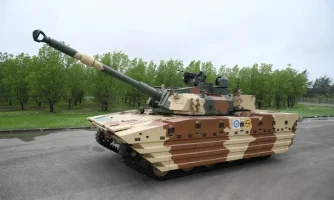- Views: 3K
- Replies: 12
India's primary border protection agency, the Border Security Force (BSF), has commenced trials of the 'Ugram', a new assault rifle developed within the country.
This 7.62mm rifle, created by the Defence Research and Development Organisation (DRDO), is being seriously considered as a replacement for the BSF's current standard-issue 5.56mm INSAS rifles.
According to a report in The Tribune dated April 21, 2025, the BSF has obtained 10 Ugram rifles along with ammunition to conduct thorough testing. This evaluation represents a key move towards equipping the force with a more powerful, entirely Indian-made weapon system.
This potential upgrade reflects a wider trend within India's security forces towards adopting firearms with greater impact, specifically the 7.62mm caliber, similar to the Indian Army's recent acquisition of AK-203 and SIG-716 rifles. The shift is seen as beneficial for counter-terrorism and border duties.
Furthermore, the trial of the Ugram rifle strongly supports the government's "Make in India" policy, promoting self-sufficiency in defence production. If successful, the Ugram could become a cost-effective, domestically sourced standard rifle for the approximately 265,000 personnel serving in the BSF.
The INSAS (Indian Small Arms System) rifle, which the Ugram might replace, has been in service with the BSF for nearly thirty years since its introduction in the late 1990s.
Developed by DRDO's Armament Research and Development Establishment (ARDE), the 5.56x45mm NATO caliber INSAS rifle was initially intended to take over from the older 7.62mm self-loading rifles (SLRs) across India's military and police forces.
However, the INSAS system has faced ongoing complaints regarding its performance, including instances of jamming in difficult environmental conditions and insufficient stopping power, which were highlighted in legal challenges and media reports over the years, including army concerns noted by The Hindu in 2017 regarding its effectiveness in Jammu and Kashmir.
The BSF is responsible for guarding India's extensive 6,386-kilometre land borders with Pakistan and Bangladesh, confronting a range of security challenges. These include preventing illegal cross-border movements, tackling smuggling operations – increasingly involving drones, as seen in the recent recovery of three Pakistani drones near Amritsar on April 19, 2025 – and countering armed militants.
The 5.56mm ammunition used by the INSAS rifle is generally considered less effective in stopping determined adversaries quickly, especially those wearing body armour or encountered in difficult terrains like the Line of Control (LoC) in Jammu.
The move back to a larger 7.62mm caliber, reminiscent of the pre-INSAS SLRs and aligning with the Army's current choices (AK-203 using 7.62x39mm and SIG-716 using 7.62x51mm), aims to provide BSF personnel with significantly more stopping power.
The Ugram assault rifle is a collaborative effort between DRDO's ARDE facility in Pune and a private Indian defence firm, Dvipa Armour India Private Limited based in Hyderabad. As a fully indigenous 7.62x51mm weapon, it is designed specifically to meet the BSF's requirements.
A key advantage highlighted is its reliance on India's domestic defence industry, avoiding the issues of foreign component dependency that sometimes affected the INSAS system. This focus on local manufacturing is expected to make the Ugram more economical and ensure a stable supply chain.
First shown to the public during the DefExpo defence exhibition in 2024, the rifle incorporates modern design elements like adaptability for different attachments using Picatinny rails, reflecting current international standards for infantry weapons.
The BSF's acquisition of 10 Ugram units for testing, reported by The Tribune, indicates the start of a comprehensive evaluation phase. These trials will focus on the rifle's dependability, ease of handling (including recoil), and overall effectiveness in scenarios mirroring actual border conditions.
Trials could involve tests simulating high-altitude operations along the LoC and engagements typical of anti-smuggling operations, such as the recent seizure of six pistols and ammunition near Amritsar on April 18, 2025.
Adopting a 7.62mm rifle also corresponds with the BSF's evolving operational tasks, which include assisting the Army on the LoC, a point underscored in opinion pieces discussing the roles of Central Armed Police Forces, like one published in The Tribune in January 2025.


